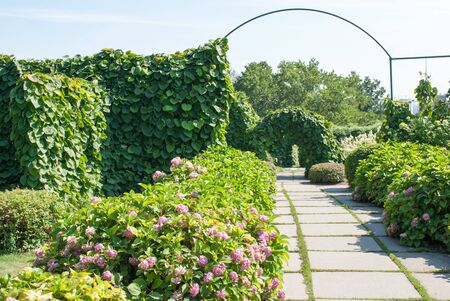Introduction to Greenhouse Positioning in the UK
When planning a greenhouse in the UK, positioning is far more than a matter of convenience—it is a crucial factor that can determine the success or failure of your growing efforts. The British climate, with its variable light levels, frequent cloud cover, and gusty winds, demands careful consideration when it comes to siting a greenhouse. Traditionally, British gardeners have developed ingenious strategies for making the most of limited sunlight and protecting delicate plants from the elements. In this context, optimal greenhouse placement becomes essential for maximising both sunlight exposure and shelter, ensuring healthy plant growth throughout the year. This article will explore the key considerations for positioning a greenhouse in the UK, drawing on local gardening wisdom and practical experience to help you achieve the best results from your investment.
2. Understanding the Path of Sunlight
One of the most critical aspects when positioning a greenhouse in the UK is understanding how sunlight travels across your plot throughout the year. The sun’s trajectory varies considerably between summer and winter, which directly affects both the amount and quality of light your crops will receive. In Britain, the sun rises in the east and sets in the west, but its angle and elevation change with the seasons. During summer, the sun climbs higher in the sky and tracks a longer arc from northeast to northwest, providing extended daylight hours. Conversely, in winter, it stays lower on the horizon and follows a shorter path from southeast to southwest, leading to reduced light intensity and duration.
This seasonal fluctuation influences not only plant growth rates but also internal greenhouse temperatures. Crops like tomatoes and cucumbers thrive with abundant sunlight, so proper orientation can dramatically impact yield. Typically, an east-west alignment is favoured for larger greenhouses as it maximises exposure during the low winter sun, ensuring all plants benefit from available daylight. For smaller domestic greenhouses, a north-south orientation may be more practical for even light distribution over spring and summer.
Seasonal Sun Path Comparison Table
| Season | Sunrise Direction | Sunset Direction | Maximum Sun Angle | Day Length (approx.) |
|---|---|---|---|---|
| Summer (June) | Northeast | Northwest | ~62° above horizon | 16-18 hours |
| Winter (December) | Southeast | Southwest | ~15° above horizon | 7-8 hours |
| Spring/Autumn (March/September) | East | West | ~38° above horizon | 12 hours |
The table above illustrates just how much these patterns shift across the year in the UK. By mapping out shade and sun hotspots in your garden—ideally over several months—you can make an informed decision about where to site your greenhouse for maximum efficiency. It’s also wise to consider any permanent obstructions such as buildings or mature trees that could cast unwanted shadows at crucial times of day or year.
![]()
3. Shelter from Prevailing Winds and Weather
In the UK, prevailing westerly winds and unpredictable weather are perennial challenges for greenhouse owners. Effective positioning involves both an understanding of local wind patterns and a proactive approach to shielding your structure from the brunt of these elements. The dominant westerlies can lead to rapid heat loss, physical damage, and increased energy costs if not properly accounted for. To mitigate such risks, it is advisable to site greenhouses where natural barriers—such as existing hedges, fences, or outbuildings—can provide shelter without casting excessive shade.
For those without natural windbreaks, constructing artificial barriers like windbreak netting or slatted wooden fences can prove invaluable. These solutions help diffuse strong gusts rather than block them entirely, which can otherwise create turbulent eddies that may be just as harmful. It’s also worth noting that the position of your greenhouse in relation to slopes or higher ground can affect exposure; placing it on the leeward side of a gentle rise can offer significant protection.
Sudden weather shifts—ranging from heavy rain to cold snaps—are common British concerns that influence greenhouse placement. Ensuring adequate drainage around the base will prevent waterlogging during downpours, while maintaining access paths free from standing water protects both plants and gardeners. Additionally, orienting the entrance away from prevailing winds reduces heat loss every time the door is opened during winter’s colder spells.
Ultimately, thoughtful siting tailored to local conditions is key: combining strategic use of landscape features with practical additions ensures that your greenhouse remains a productive haven regardless of what the British weather brings.
4. Dealing with Shade and Local Obstacles
When siting a greenhouse in the UK, one of the most persistent challenges is avoiding unwanted shade from neighbouring structures, mature trees, or classic British hedgerows. In densely populated areas and typical British gardens, where boundaries can be tight and space at a premium, these obstacles are almost inevitable. Here’s some practical advice for minimising their impact and ensuring your greenhouse receives optimal sunlight throughout the year.
Assessing Sources of Shade
Begin by observing your garden over several days—ideally in both summer and winter—to identify when and where shade falls. Note how nearby fences, sheds, garages, or tall planting cast shadows at different times of day. Mapping this out on paper or using a simple sun-tracking app helps you choose a position with the longest uninterrupted exposure.
Common Local Obstacles in British Gardens
| Obstacle | Impact on Sunlight | Possible Solutions |
|---|---|---|
| Trees (deciduous/coniferous) | Can block light year-round (conifers) or mainly in summer (deciduous) | Prune branches; site greenhouse to north or east side of tree if possible |
| Hedgerows | May shade lower levels; often on boundaries | Keep greenhouse at least 1-2m away; trim regularly |
| Sheds & Garages | Cast long shadows especially in winter afternoons | Avoid placing greenhouse directly to north side; use as windbreak if positioned south or west |
| Neighbouring Buildings/Fences | Permanently shaded zones close to high walls/fences | Sit greenhouse at a diagonal angle for more sun exposure; seek permission to paint fences a lighter colour to reflect light |
Strategic Greenhouse Positioning Tips
- Aim for the South: In most UK gardens, orienting the ridge of your greenhouse east-west ensures both sides receive ample morning and afternoon light.
- Distance Matters: Keep at least 1.5–2 metres clear between your greenhouse and large obstacles for better airflow and reduced shading.
- Utilise Reflected Light: Pale-coloured walls or fencing nearby can help bounce additional sunlight onto your greenhouse—an advantage during the darker winter months.
- Seasonal Adjustments: Remember that deciduous trees may allow more winter sun through but cast deeper shade from spring to autumn; plan accordingly if you rely on early season crops.
What If Relocation Isn’t Possible?
If your only available spot is partially shaded, consider using shade-tolerant crops in affected areas or deploying reflective mulches inside to maximise what light is available. Regularly pruning overhanging branches and negotiating with neighbours about hedge heights can also make significant differences over time.
5. Balancing Access, Utilities, and Aesthetics
When positioning a greenhouse in the UK, it’s essential to strike a thoughtful balance between practical access, utility connections, and visual harmony with your property. While maximising sunlight exposure is crucial, proximity to water and power sources can significantly affect daily use and maintenance. For example, situating your greenhouse too far from an outdoor tap or mains supply may make irrigation laborious, especially during dry spells common in late spring and summer. Similarly, easy access to electricity is increasingly important for those using propagators, heated mats, or automated ventilation systems—features that are often vital for extending the growing season in unpredictable British weather.
However, these practical considerations must be weighed against the overall aesthetic of your garden or plot. In a typical suburban setting, you might prefer to tuck your greenhouse away from the main lawn or patio to maintain an uncluttered visual flow. Conversely, on larger rural properties, integrating the structure with existing hedgerows or outbuildings can help it blend seamlessly into the landscape while still receiving adequate sunlight. This integration not only preserves kerb appeal but also aligns with the traditional British emphasis on gardens as restful extensions of the home rather than purely utilitarian spaces.
Ultimately, compromises are often necessary. You may need to accept slightly reduced sunlight in favour of easier watering access or position your greenhouse where it’s partially screened by fencing to maintain privacy without sacrificing functionality. Thoughtful planning at this stage—perhaps marking out potential spots and observing sun patterns through different seasons—can save considerable effort later and ensure your greenhouse becomes a harmonious part of both your gardening routine and the character of your property.
6. Adaptations for Regional Differences
The United Kingdom’s gardening traditions are as diverse as its microclimates, which means the ideal greenhouse position can vary significantly depending on your location. Recognising these differences is crucial to maximising your growing potential and ensuring your greenhouse stands up to the local weather.
Scotland: Prioritising Shelter and Light
Gardeners in Scotland must contend with shorter days, lower sun angles, and often fierce winds. Position your greenhouse to make the most of available sunlight—ideally on a south-facing aspect—and use hedges or fences as windbreaks without casting excessive shade. Consider extra insulation or double glazing to help retain heat during chilly nights.
Wales: Managing Rainfall and Humidity
Wales is renowned for its rainfall, so effective drainage is essential. Elevate your greenhouse slightly or install gravel beds to prevent waterlogging. While southern exposure remains ideal, you might also want to allow for increased ventilation to combat high humidity and reduce fungal risks common in wetter climates.
Northern England: Coping with Variable Conditions
The North experiences cooler temperatures and more cloud cover than the South. Select a spot that captures every possible hour of sunlight—again, a south or south-east orientation is best. Shelter from prevailing westerly winds is beneficial, but take care not to block morning light, which helps warm plants after cold nights.
Southern England: Maximising Sunlight and Preventing Overheating
In the South, longer daylight hours and milder winters provide an advantage. However, with increased sun intensity comes the risk of overheating—especially in summer. Position your greenhouse away from reflective surfaces like brick walls, consider partial shading in the hottest months, and ensure ample ventilation to maintain stable temperatures inside.
Local Customs and Practicalities
Beyond climate, regional gardening customs influence greenhouse use. For instance, allotments are particularly popular in urban areas of England, affecting available space and orientation options. In rural Scotland or Wales, you may have more room but face stronger exposure to elements. Always tailor your greenhouse set-up to both the local climate and your site’s unique characteristics for the best results.
7. Summary and Key Takeaways
Positioning a greenhouse in the UK presents a unique set of challenges and opportunities, given our famously unpredictable weather and often compact garden spaces. To maximise sunlight exposure, always favour a location with the least shade—ideally, an east–west orientation allows your plants to enjoy the full benefit of morning and afternoon sun. Consider shelter from prevailing winds, which typically come from the south-west; using existing fences or hedges for protection can help maintain warmth and prevent structural damage. Check drainage in your chosen spot as well—standing water is a recipe for rot and fungus. When possible, site your greenhouse close to essential utilities such as water and electricity, making day-to-day tasks easier, especially during those long winter months. Keep access routes practical and think about proximity to the house for convenience. In summary, the key actionable steps are: prioritise sunlight, provide wind shelter without blocking light, ensure good drainage, maintain convenient access, and integrate your greenhouse thoughtfully into your overall garden layout. These considerations will help you create a productive and resilient growing environment that’s well-suited to the quirks of British gardens and weather.


